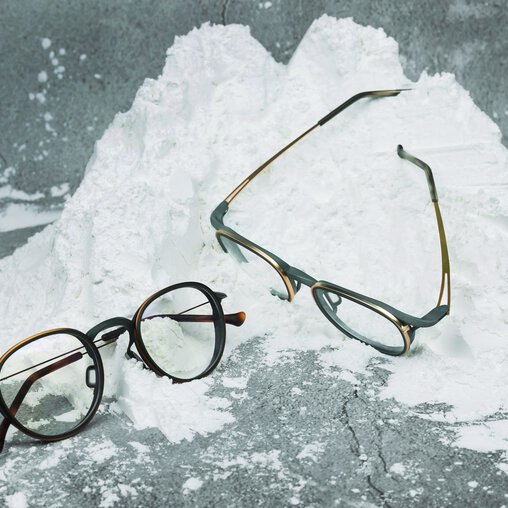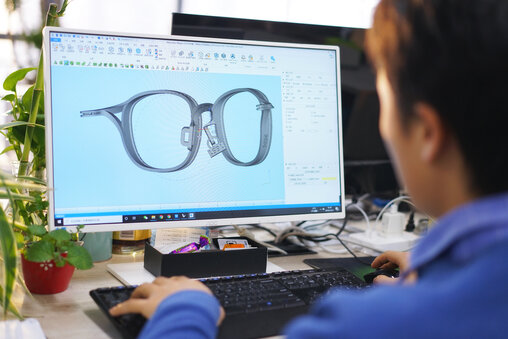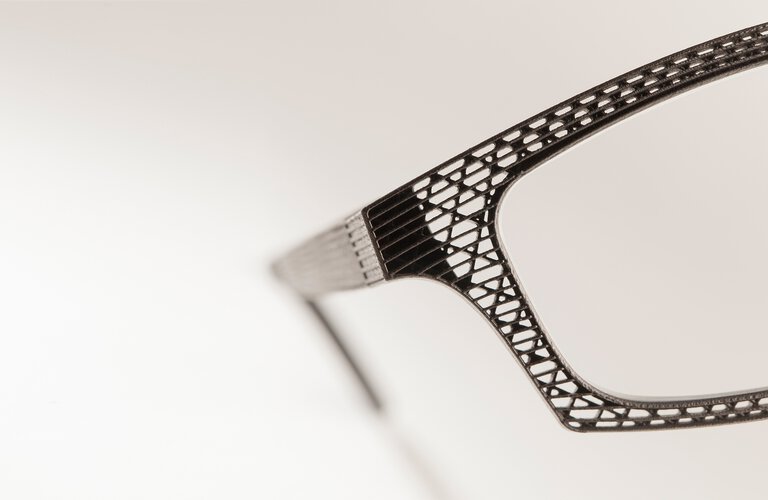Using the Advantages of Additive Manufacturing for Tailor-Made Glasses Frames
The Chinese company Nanjing BRAGi Optical Technology Co, Ltd. is doing exactly this as their business model - while relying on the experience and expertise of EOS, the technology provider for 3D printing, for this and future growth.
BRAGi rapidly established a business model that enables the quick and easy production of individual glasses frames by means of additive manufacturing as a complete scan-to-print solution.
We are already familiar with the concept of customized production from numerous other applications, for example in the medical sector. After all, prostheses or implants are also tailored to individual patients. So why wouldn’t the same concept work in the field of optics?
Challenge
"One size fits all" - a nice idea, but often not feasible. This applies especially to acetate frames manufactured using the traditional injection molding or 2D cutting process - individual face shapes with their decisive nuances are simply too different. In some cases, the lenses may even be at the wrong distance from the eye, or the wrong height in relation to the pupils.
The solution is obvious. In order to achieve a perfectly fitting shape of the frame right from the start, an individual, precisely production is necessary.
Selective Laser Sintering (SLS) is a proven technology that has been successful and established for many years. A laser prints a part layer by layer - ideal for a high degree of customization without additional costs. All that is required is an industrial 3D printer and material plus the corresponding 3D computer data. Any component can be easily and quickly produced from the data. This also applies to eyewear, which are delicate but still need to be robust and fit precisely.
Solution
The solution found by BRAGi takes all this into consideration: data about the shape of the head are captured using a 3D scanner. All the glasses wearer needs to do is visit a partner optician. In just a few minutes, the optician takes several photos of the person’s head with a camera mounted on a tablet. This way, the look of the new glasses can also be checked immediately with a virtual representation. The look of other designs can be quickly checked as well with the subject's own face.
Afterwards, the frame is individually manufactured for its wearer - one of 70 models from seven series is always chosen as the basis. The range extends from adult's to children's glasses and even prescription sunglasses. The frame is always manufactured in white nylon and given a finish during post-processing, with one of 14 different colors. A pure white and easily post-treatable surface is particularly important for high-quality coloring.
For manufacturing, BRAGi uses FORMIGA P 110 Velocis systems and EOS's proven PA 2200 material.
We intensively compared the technologies of different suppliers from all over the world. The EOS system is superior to other manufacturers in terms of component quality and surface finish. The fit between frame and bracket is excellent for every build cycle, and the technology-related staircase effect is virtually non-existent. In addition, the material allows any form of finish, including coloring. The purity of the white of the glasses frames is also very important, and here again the EOS system is at the top.
Results
BBRAGi rapidly established a business model that enables the quick and easy production of individual glasses frames by means of additive manufacturing as a complete scan-to-print solution. This is particularly useful for glasses wearers who have problems with standard frame shapes due to the shape of their noses. But all other users of BRAGi eyewear will also enjoy the very comfortable fit, which at the same time guarantees optimum optical support and low weight. In addition, the glasses are robust and have a long service life. Another very important feature for wearers: they are hypoallergenic.
Stop doing prototyping. Start production. 3D printing is revolutionary for the optical industry.
The business model is streamlined and enables a high degree of individuality: in the injection molding or 2D cutting process, the minimum order quantity for a frame is about 500 pieces - in contrast to custom-made and at the same time low-cost additively and individually manufactured glasses. Nevertheless, the process and part quality are consistently high - the combination with the material properties of PA 2200 means glasses frames that can withstand the high demands of post-processing, right down to coloring and appearance. As this is a fashion-oriented industry, new designs can be developed and implemented quickly.
IIn just a few months, BRAGi has already produced over 30,000 glasses and shipped them to customers with a short delivery time. For BRAGi, this means prosperous business development: the company, which is based in China, has expanded its business activities to Korea, Japan, Indonesia, Singapore, Thailand and Malaysia, and there are also already inquiries from Europe. A scan at home is also planned in order to make it even more convenient for customers. Simplifying the supply chain in this way would further improve margins. As a result, additive manufacturing would contribute to another positive effect on the business model. The ability to implement their model without additional points of sales or warehouses is also a plus point for BRAGi in this scenario. More and more glasses wearers are benefiting from the advantages of a custom-made frame.














